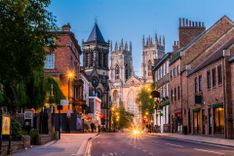Last, but not least, is relative newcomer and delightfully over-the-top Kinloch Castle, on the Isle of Rùm. Built by millionaire Sir George Bullough in 1900, the red sandstone pile is a display of Edwardian extravagance and eccentricity. In its heyday there was a conservatory for growing exotic fruit, a greenhouse with hummingbirds, even some alligators until they were shot when on the loose. Guests were serenaded before dinner with tunes belted out from an orchestrion, an electrical barrel organ, which is on display. There are tiger rugs and stags’ heads, and a Steinway piano, which still bears the marks of a lady dancing on it in her high heels.
8. Dig your toes into white-sand beaches
Gazing at any of those white-sand beaches and you could think you’re in Barbados. Ok, it’s definitely not as hot and, sure, the water temperature can be decidedly bracing. But the Highlands is blessed with stunning coastlines and oodles of gorgeous beaches. Stick a sweater on and you won’t know the difference.
Argyll has stunning sands at Kiloran Bay on Colonsay, and on Islay, Coll and Tiree. Beaches at Gruinard Bay in Wester Ross in the northwest Highlands are excellent, and routes north of Lochinver offer a string of them, such as the white sands and turquoise waters in the tiny bay at Achmelvich.
Further north is the jewel that is Sandalwood Bay, its sugar-white beach, backed by large dunes, taking top billing. To get there, however, it’s an eight-mile round trip of a walk from Blairmore. But, boy, it’s worth it.




















